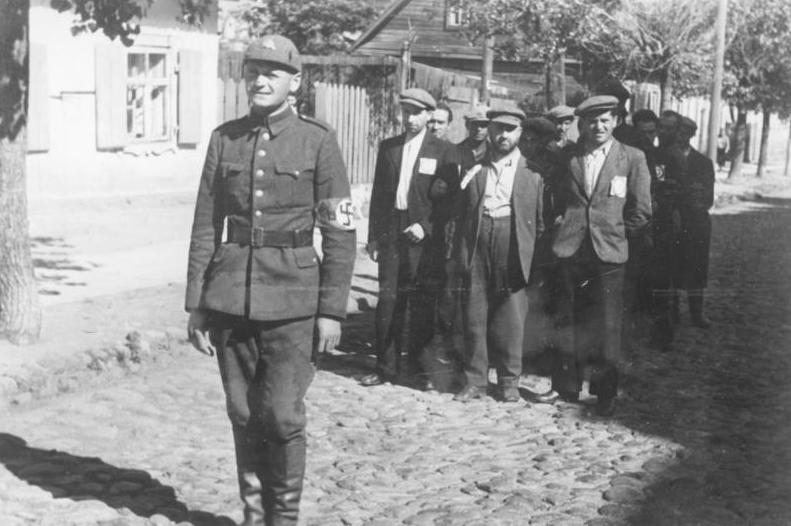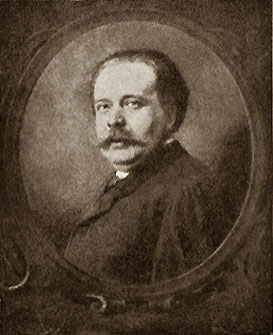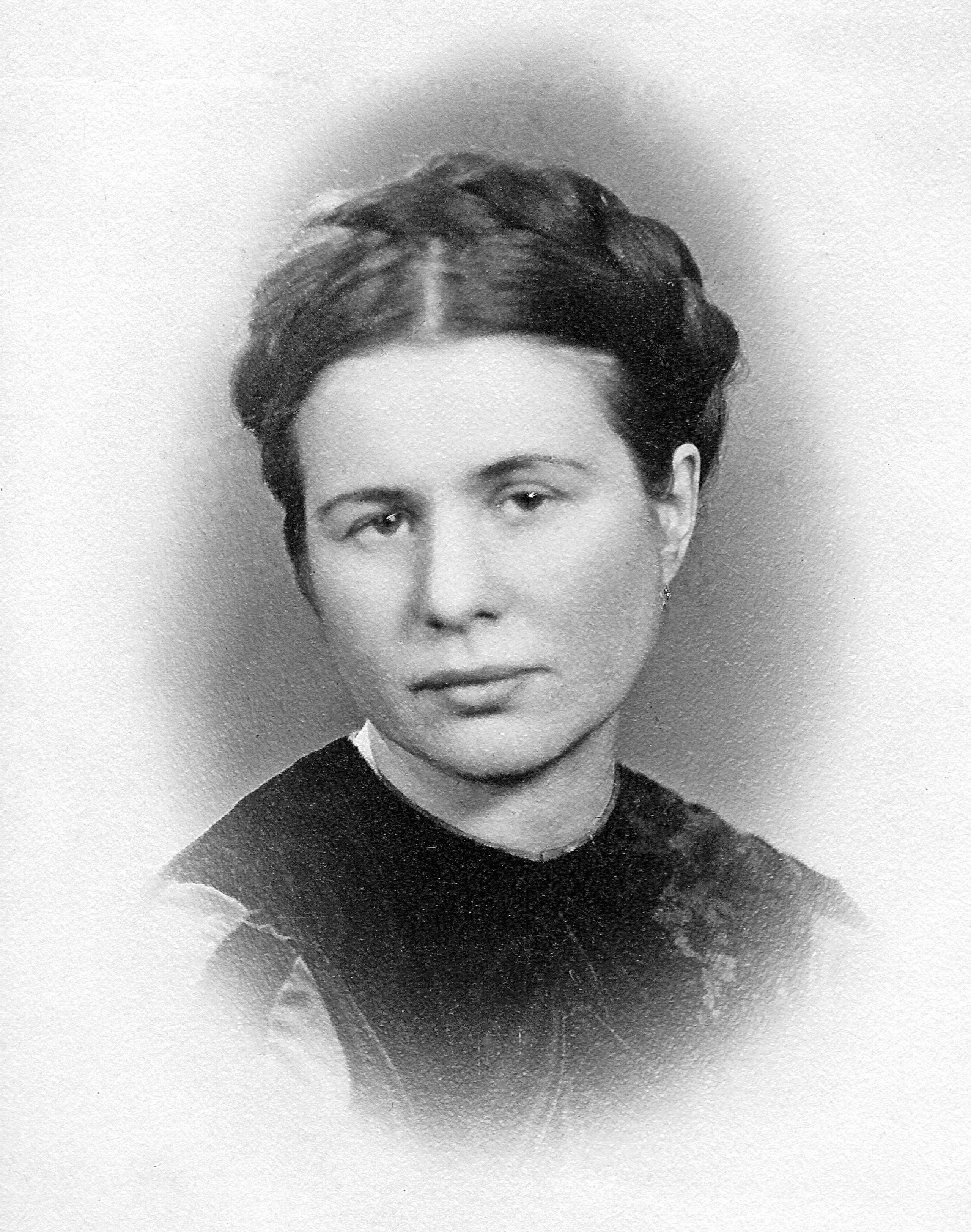|
Vilna Ghetto
The Vilna Ghetto was a World War II Jewish ghetto established and operated by Nazi Germany in the city of Vilnius in the modern country of Lithuania, at the time part of the Nazi-administered Reichskommissariat Ostland. During the approximately two years of its existence starvation, disease, street executions, maltreatment, and deportations to concentration and extermination camps reduced the ghetto's population from an estimated 40,000 to zero. Only several hundred people managed to survive, mostly by hiding in the forests surrounding the city, joining Soviet partisans,Piotr Zychowicz "Wybory Icchaka Arada"(the Yitzhak Arad choices), Rzeczpospolita, 12-07-2008. ''More external sources at Yitzhak Arad article.''Piotr Zychowicz "Icchak Arad: od NKVD do Yad Vashem" (From NKVD to Yad Vashem)Rzeczpospolita, July 12, 2008 or sheltering with sympathetic locals. Background Before the German-Soviet invasion of Poland in September 1939, Wilno (Vilna in Yiddish) was the capital ... [...More Info...] [...Related Items...] OR: [Wikipedia] [Google] [Baidu] |
Julian Klaczko
Julian Klaczko (6 November 1825, Vilna (Wilno, Vilnius) – 26 November 1906, Kraków) was a Polish author, proficient in Hebrew, Polish, French, and German. He was born Jehuda Lejb into a wealthy Jewish family. At the age of 17 he published a book of Hebrew poetry called "Duda'im"(דודאים), as well as translating Polish literary works into Hebrew. He studied in Wilno and Königsberg (Królewiec), his interests including Philosophy, History and Literature. In 1847, he earned a PhD (doctorate work ''De rebus Franco-Gallicis saeculi XV''). He then moved to Heidelberg, and published in the liberal ''Deutsche Zeitung''. After the failure of the Poznań uprising (1848) he emigrated to France where he lived for the following 20 years. In Paris he changed his name and converted to Roman Catholic Christianity (1856), after his father's death. He was a co-editor of ''Wiadomości Polskie'', and published in ''Revue de Paris'', ''Revue Contemporaine'', and ''Revue des Deux Mondes'' ... [...More Info...] [...Related Items...] OR: [Wikipedia] [Google] [Baidu] |
Reichskommissariat Ostland
The Reichskommissariat Ostland (RKO) was established by Nazi Germany in 1941 during World War II. It became the civilian occupation regime in Estonia, Latvia, Lithuania, and the western part of Byelorussian SSR. German planning documents initially referred to an equivalent ''Reichskommissariat Baltenland''. The political organization for this territory – after an initial period of military administration before its establishment – involved a German civilian administration, nominally under the authority of the Reich Ministry for the Occupied Eastern Territories led by Nazi ideologist Alfred Rosenberg, but actually controlled by the Nazi official Hinrich Lohse, its appointed ''Reichskommissar''. Germany's main political objectives for the ''Reichskommissariat'', as laid out by the Ministry within the framework of Nazism's policies for the east established by Adolf Hitler, included the genocide of the Jewish population, as well as the ''Lebensraum'' settlement of ethnic Ge ... [...More Info...] [...Related Items...] OR: [Wikipedia] [Google] [Baidu] |
Yiddish Language
Yiddish (, or , ''yidish'' or ''idish'', , ; , ''Yidish-Taytsh'', ) is a West Germanic language historically spoken by Ashkenazi Jews. It originated during the 9th century in Central Europe, providing the nascent Ashkenazi community with a vernacular based on High German fused with many elements taken from Hebrew (notably Mishnaic) and to some extent Aramaic. Most varieties of Yiddish include elements of Slavic languages and the vocabulary contains traces of Romance languages.Aram Yardumian"A Tale of Two Hypotheses: Genetics and the Ethnogenesis of Ashkenazi Jewry".University of Pennsylvania. 2013. Yiddish is primarily written in the Hebrew alphabet. Prior to World War II, its worldwide peak was 11 million, with the number of speakers in the United States and Canada then totaling 150,000. Eighty-five percent of the approximately six million Jews who were murdered in the Holocaust were Yiddish speakers,Solomon Birnbaum, ''Grammatik der jiddischen Sprache'' (4., erg. Aufl., Ha ... [...More Info...] [...Related Items...] OR: [Wikipedia] [Google] [Baidu] |
Second Polish Republic
The Second Polish Republic, at the time officially known as the Republic of Poland, was a country in Central and Eastern Europe that existed between 1918 and 1939. The state was established on 6 November 1918, before the end of the First World War. The Second Republic ceased to exist in 1939, when Poland was invaded by Nazi Germany, the Soviet Union and the Slovak Republic, marking the beginning of the European theatre of the Second World War. In 1938, the Second Republic was the sixth largest country in Europe. According to the 1921 census, the number of inhabitants was 27.2 million. By 1939, just before the outbreak of World War II, this had grown to an estimated 35.1 million. Almost a third of the population came from minority groups: 13.9% Ruthenians; 10% Ashkenazi Jews; 3.1% Belarusians; 2.3% Germans and 3.4% Czechs and Lithuanians. At the same time, a significant number of ethnic Poles lived outside the country's borders. When, after several regional conflicts, th ... [...More Info...] [...Related Items...] OR: [Wikipedia] [Google] [Baidu] |
Wilno Voivodeship (1923–1939)
Wilno Voivodeship may refer to: *Vilnius Voivodeship, one of the historic voivodeships of the Grand Duchy of Lithuania, established in 1413 *Wilno Voivodeship (1926–1939) The Wilno Voivodeship ( pl, województwo wileńskie) was one of 16 Voivodeships in the Second Polish Republic, with the capital in Wilno (now Vilnius, Lithuania). The jurisdiction was created in 1926 and populated predominantly by Poles, wit ..., voivodeship of Poland from 1926 to 1939 {{disambig it:Voivodato di Vilnius pt:Voivodia de Wilno ... [...More Info...] [...Related Items...] OR: [Wikipedia] [Google] [Baidu] |
Invasion Of Poland
The invasion of Poland (1 September – 6 October 1939) was a joint attack on the Republic of Poland by Nazi Germany and the Soviet Union which marked the beginning of World War II. The German invasion began on 1 September 1939, one week after the signing of the Molotov–Ribbentrop Pact between Germany and the Soviet Union, and one day after the Supreme Soviet of the Soviet Union had approved the pact. The Soviets invaded Poland on 17 September. The campaign ended on 6 October with Germany and the Soviet Union dividing and annexing the whole of Poland under the terms of the German–Soviet Frontier Treaty. The invasion is also known in Poland as the September campaign ( pl, kampania wrześniowa) or 1939 defensive war ( pl, wojna obronna 1939 roku, links=no) and known in Germany as the Poland campaign (german: Überfall auf Polen, Polenfeldzug). German forces invaded Poland from the north, south, and west the morning after the Gleiwitz incident. Slovak military forces ad ... [...More Info...] [...Related Items...] OR: [Wikipedia] [Google] [Baidu] |
Rescue Of Jews During The Holocaust
During World War II, some individuals and groups helped Jews and others escape the Holocaust conducted by Nazi Germany. Since 1953, Israel's Holocaust memorial, Yad Vashem, has recognized 26,973 persons as Righteous among the Nations. Yad Vashem's Holocaust Martyrs' and Heroes' Remembrance Authority, headed by an Israeli Supreme Court justice, recognizes rescuers of Jews as Righteous among the Nations to honor non-Jews who risked their lives during the Holocaust to save Jews from extermination by the Nazi Germany. By country Poland Poland had a very large Jewish population, and, according to Norman Davies, more Jews were both killed and rescued in Poland than in any other nation: the rescue figure usually being put at between 100,000–150,000.Norman Davies; ''Rising '44: the Battle for Warsaw''; Viking; 2003; p. 200 The memorial at Bełżec extermination camp commemorates 600,000 murdered Jews and 1,500 Poles who tried to save Jews. Thousands in Poland have bee ... [...More Info...] [...Related Items...] OR: [Wikipedia] [Google] [Baidu] |
Rzeczpospolita
() is the official name of Poland and a traditional name for some of its predecessor states. It is a compound of "thing, matter" and "common", a calque of Latin ''rés pública'' ( "thing" + "public, common"), i.e. ''republic'', in English also rendered as ''commonwealth'' (historic) and ''republic'' (current). In Poland, the word is used exclusively in relation to the Republic of Poland, while any other republic is referred to in Polish as a , e.g., French Republic – pl, Republika Francuska. Origins The term has been used in Poland since the beginning of the 16th century. It was adapted for Poland, as it at that time had a unique republican system, similar to the former Roman . The famous quote by Jan Zamoyski, the Lord Chancellor of the Crown, on the importance of education is an example of its use: The meaning of is well described by the term ''commonwealth''. As a result, the literal meaning of is "Polish Commonwealth", or "Republic of Poland". Although the ... [...More Info...] [...Related Items...] OR: [Wikipedia] [Google] [Baidu] |
Yitzhak Arad
Yitzhak Arad ( he, יצחק ארד; né Icchak Rudnicki; November 11, 1926 – May 6, 2021) was an Israeli historian, author, IDF brigadier general and Soviet partisan. He also served as Yad Vashem's director from 1972 to 1993, and specialised in the history of the Holocaust. Names He was born Icchak Rudnicki, later adopting the Hebrew surname Arad ( he, ארד). During World War II, he was known as Tolya (Russian diminutive for Anatoly) in the underground and among the partisans.Burkhard SchröderLitauen und die jüdischen Partisanen (Lithuania and the Jewish Partisans) ''Heise Online'', September 14, 2008 Early life Arad was born Icchak Rudnicki on November 11, 1926, in what was then Święciany in the Second Polish Republic (now Švenčionys, Lithuania). In his youth, he belonged to the Zionist youth movement ''Ha-No'ar ha-Tsiyyoni''. World War II According to Arad's 1993 interview with Harry J. Cargas, he was active in the ghetto underground movement from 1942 to ... [...More Info...] [...Related Items...] OR: [Wikipedia] [Google] [Baidu] |
Soviet Partisans
Soviet partisans were members of resistance movements that fought a guerrilla war against Axis forces during World War II in the Soviet Union, the previously Soviet-occupied territories of interwar Poland in 1941–45 and eastern Finland. The activity emerged after Nazi Germany's Operation Barbarossa was launched from mid-1941 on. It was coordinated and controlled by the Soviet government and modeled on that of the Red Army. The partisans made a significant contribution to the war by countering German plans to exploit occupied Soviet territories economically, gave considerable help to the Red Army by conducting systematic attacks against Germany's rear communication network, disseminated political rhetoric among the local population by publishing newspapers and leaflets, and succeeded in creating and maintaining feelings of insecurity among Axis forces. Soviet partisans also operated on interwar Polish and Baltic territories occupied by the Soviet Union in 1939–1940, bu ... [...More Info...] [...Related Items...] OR: [Wikipedia] [Google] [Baidu] |
Extermination Camp
Nazi Germany used six extermination camps (german: Vernichtungslager), also called death camps (), or killing centers (), in Central Europe during World War II to systematically murder over 2.7 million peoplemostly Jewsin the Holocaust. The victims of death camps were primarily murdered by gassing, either in permanent installations constructed for this specific purpose, or by means of gas vans. The six extermination camps were Chełmno, Belzec, Sobibor, Treblinka, Majdanek and Auschwitz-Birkenau. Auschwitz and Majdanek death camps also used extermination through labour in order to kill their prisoners. The idea of mass extermination with the use of stationary facilities, to which the victims were taken by train, was the result of earlier Nazi experimentation with chemically manufactured poison gas during the secretive Aktion T4 euthanasia programme against hospital patients with mental and physical disabilities. The technology was adapted, expanded, and applied in ... [...More Info...] [...Related Items...] OR: [Wikipedia] [Google] [Baidu] |
Concentration Camp
Internment is the imprisonment of people, commonly in large groups, without charges or intent to file charges. The term is especially used for the confinement "of enemy citizens in wartime or of terrorism suspects". Thus, while it can simply mean imprisonment, it tends to refer to preventive confinement rather than confinement ''after'' having been convicted of some crime. Use of these terms is subject to debate and political sensitivities. The word ''internment'' is also occasionally used to describe a neutral country's practice of detaining belligerent armed forces and equipment on its territory during times of war, under the Hague Convention of 1907. Interned persons may be held in prisons or in facilities known as internment camps (also known as concentration camps). The term ''concentration camp'' originates from the Spanish–Cuban Ten Years' War when Spanish forces detained Cuban civilians in camps in order to more easily combat guerrilla forces. Over the following d ... [...More Info...] [...Related Items...] OR: [Wikipedia] [Google] [Baidu] |








